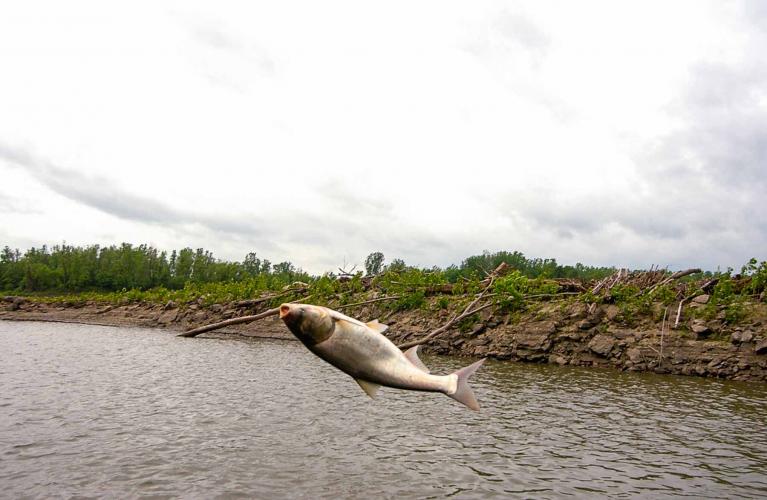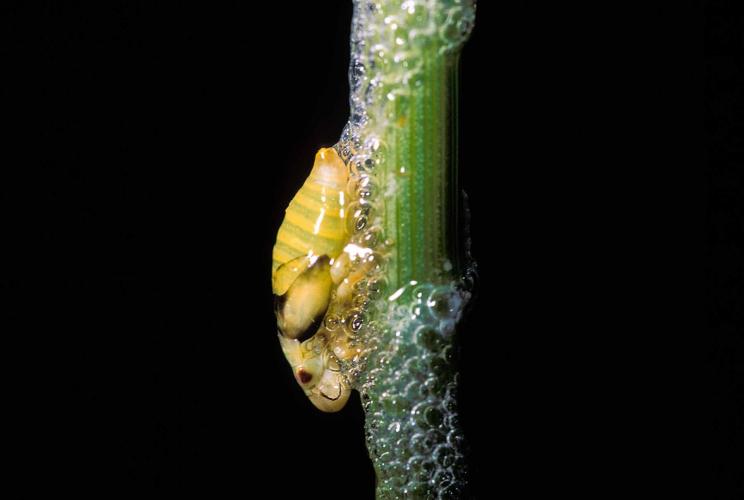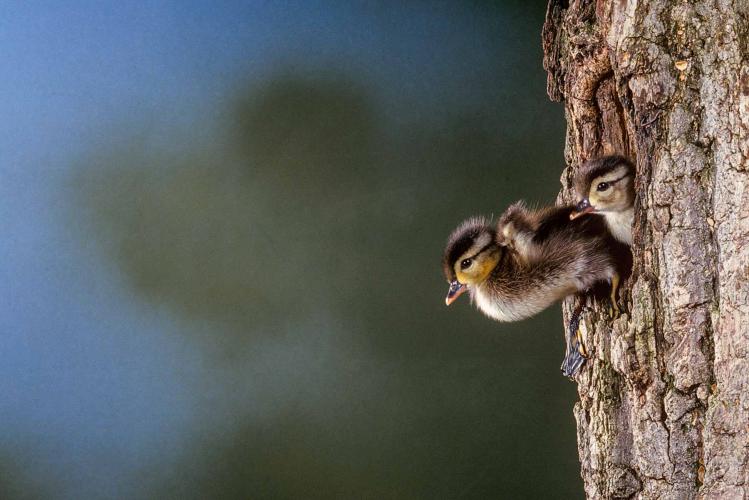2020 is a leap year. That means February will have 29 days instead of 28. To celebrate all those extra hours — 24 to be exact — we’re looking at critters that take leaping to new lengths. Ready? Let’s jump right in!
Moving Around
Many animals leap to get from place to place.
Dashing Deer
White-tailed deer bound around in low, graceful leaps, throwing in higher jumps ever so often to get a better look. When they need to hoof it, they can bounce about at speeds up to 36 mph for 4 miles at a stretch. Getting over obstacles isn’t a problem, either. When needed, deer can hop more than 8 feet into the air.
Forest Flyer
To get from tree to tree, a flying squirrel climbs up high, leaps into the air, and spreads its legs like your crazy uncle doing a bellybuster at the pool. Unlike your uncle, however, the squirrel doesn’t go splat. Draped between its wrists and ankles is a flap of skin that billows like a furry parachute. By steering with its long tail, the squirrelly skydiver can swoop around branches and sail safely to its destination.
Bouncy Mouse
When going about its day-to-day business, a meadow jumping mouse rarely hops farther than 6 inches at a time. But when the mouse needs to scurry in a hurry, it uses its large hind paws to leap up to 12 feet in a single bound. If a predator is in pursuit, the mouse zigzags between jumps, which makes it almost impossible to catch.
Catching Prey
Leaping comes in handy when you’re hungry.
Lethal Leap
Red foxes have superhero hearing. Need proof? A fox’s oversized ears can pinpoint a vole rustling under the snow from 100 feet away. When the crimson canine detects such a yummy morsel, it can leap the length of a living room and dive headfirst into the snow to snap up the snack.
Spring-Loaded Spider
A jumping spider’s spring comes not from strong muscles but from jetting blood into its back legs. This causes them to — sproing! — push out quickly. Most jumpers don’t spin webs, but they do make silk. It’s used to anchor a spider’s backside to a surface before the spider springs into space. The silk acts like a lifeline, so a jumper can climb to safety if it misses its mark.
Super Cougar
Missouri’s bounciest — and pounciest — mammal is the mountain lion. This rare visitor to the Show-Me State uses its powerful leg muscles to jump 20 feet straight up or 40 feet forward. This cat’s out-of-bounds bounding doesn’t make deer jump for joy. To catch whitetails and other prey, cougars creep close and then pounce, becoming a tawny-brown blur of claws and fur.
Escaping Predators
Having a long leap helps prey avoid snack attacks.
Flex Before You Leap
To escape hungry birds, a grasshopper can fling forward nearly 3 feet in a single, startling hop. To prepare for such a jump, the insect flexes beefy muscles in its big back legs. This draws the legs inward. The hopper’s knees act like a spring, storing up all the energy. When the hopper relaxes its muscles, the legs spring out, launching the insect into the air.
Oh, Snap!
The big black spots on a click beetle aren’t its eyes. They’re markings designed to scare away predators. But if the fake eyes fail to work, the beetle tries another trick. It bends its body into a “U” then straightens out suddenly with a loud CLICK! This flips the insect into the air and startles any critter that was hoping for a beetle bonbon.
King of Spring
The high-jump champion of the animal kingdom is a tiny insect called a spittlebug. These quarter inch plant munchers can skyrocket 27 inches into the air. Though a few inches doesn’t sound impressive, consider this: A human-sized spittlebug could easily hop over a 60-story skyscraper! And at takeoff, the bug’s body feels a force of about 400 times that of gravity — something no human could ever survive.
Other Reasons
Animals leap for many reasons. Some do it to attract a mate. Others do it to leave a nest.
Leap of Faith
Whee! Mama wood ducks lay their eggs in holes high up in trees. About a day after they hatch, the baby ducklings follow mom to the front door of the treehouse and bail out. The little fluff balls can fall more than 250 feet onto hard ground without being injured.
Fintastic Jumper
Beware of flying fish! Silver carp can leap over 10 feet out of the water when they’re startled by a predator or a boat’s motor. The heavy fish, which are native to Asia but have invaded Missouri’s waterways, can injure anglers and even knock people overboard.
Rabbit Rumble
Cute and cuddly doesn’t cut it for female cottontails. They want brawny boyfriends. To show how tough they are, male rabbits punch and bite each other. Often, one of the flop-eared fighters will leap high into the air and try to kick his opponent as he sails overhead. The rabbit that loses stays lonesome. The winner gets the girl.


















Also In This Issue

And More...
This Issue's Staff
Les Fortenberry
Angie Daly Morfeld
Noppadol Paothong
Marci Porter
Mark Raithel
Laura Scheuler
Matt Seek
David Stonner
Stephanie Thurber
Cliff White






















